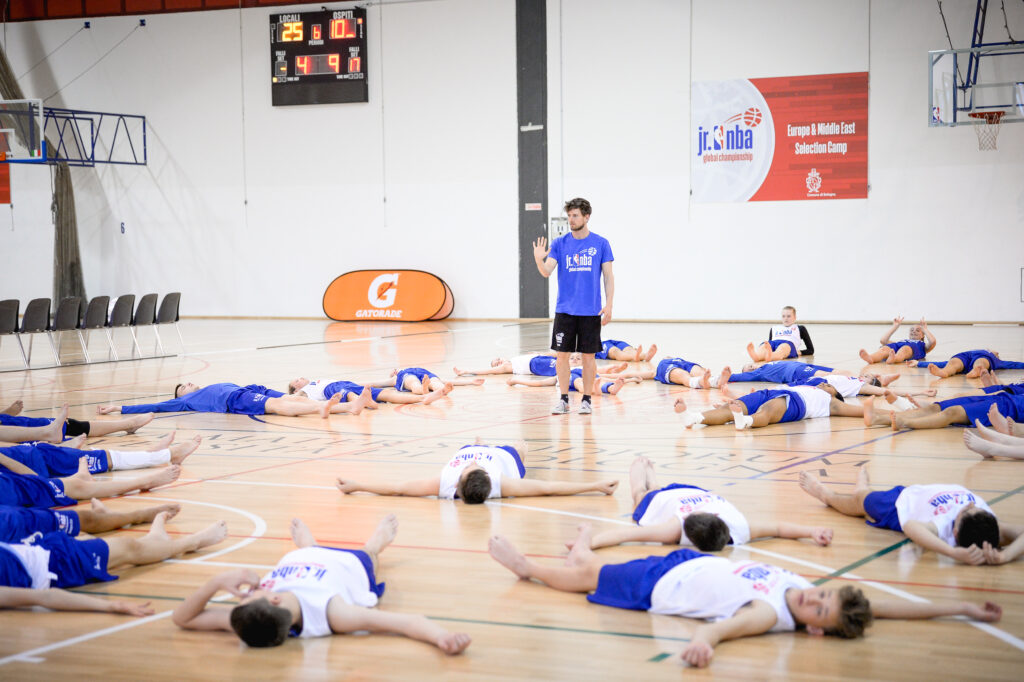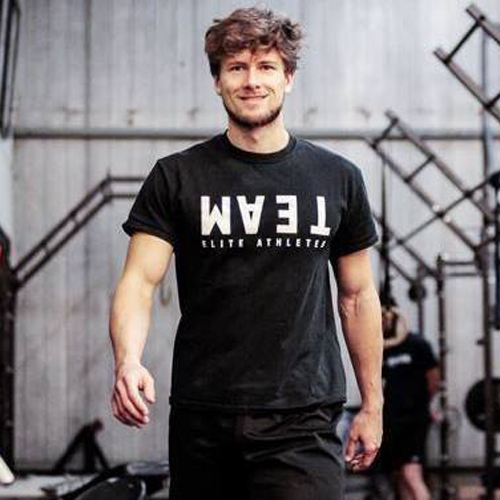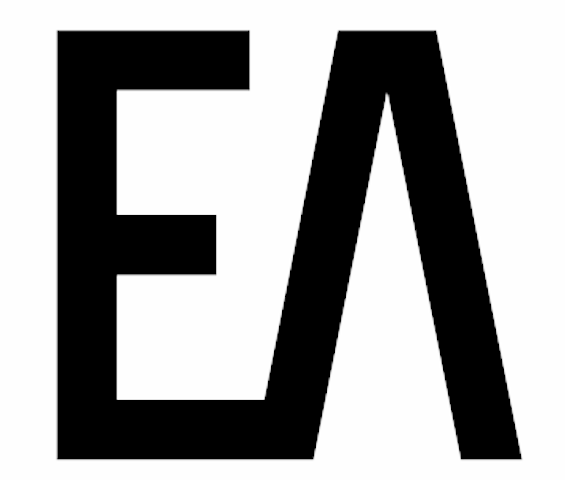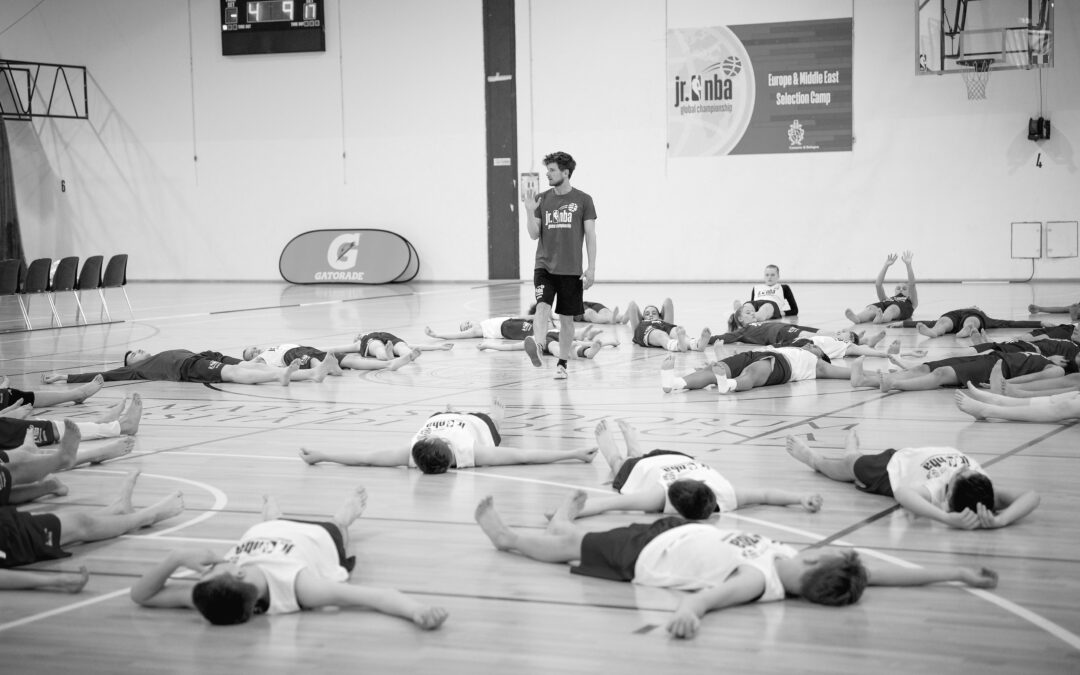The more relaxed you are the better you are at everything you do.
When you are relaxed, you see more options, your body is looser and life has a lightness to it.
When tense however, your vision narrows down into a tunnel, your legs feel heavy and new things seem difficult.
The best athletes are to be able to switch very fast between tension and relaxation.
You can interpret this statement on the level of a movement:
You could say someone like James Harden when observing his rhythmical dribbles is able to play the game of tension and relaxation in his coordination to off-set the defender.
You can also interpret this statement on the level of your energy management and observe that some players recover faster from full days of school and evening training sessions.
Athletic development in my eyes is not just about the tension-elements that are so obvious: becoming stronger and more explosive.
That can take you only so far…
Learning to relax is a skill that I feel we should treat as an important aspect of the athlete lifestyle – and especially after the “tension” of the past year we all have experienced in our bodies.
“The body keeps the score,” as therapists Bessel Van der Kolk and Gabor Mate wrote so extensively about.
Often young players think that progress is linear and that doing more and more is the only way.
The body however needs to recover and ‘digest’ all the training you do.

One of the ways we support our players recovery at the Academy and camps is through guided lying down relaxation sessions.
In these sessions we teach players a couple of tricks that help them to “activate the relaxation response of their body.”
We use the body’s contact with the gym floor’s and the support it gives to get into a deep state of “giving up” or “melting” into it.
Initially kids might wiggle around a lot on the floor, giving way to release built-up tension but soon after most of them will find a deeper state of relaxing and bringing their attention towards the sensations of their body.
With their attention turned inwards, the body is supported to do what it already wants to do: return to balance.
Returning to balance – to homeostasis of the body – is of course difficult when you’re busy all the time.
That’s why we do “active relaxation” or “active doing nothing” with our kids.
Every couple of weeks we’ll plan in an evening when team sessions are exchanged for an hour of relaxation practice.
Often afterwards kids feel a new burst of motivation to get back at it. You can see it in their eyes.
We believe in training quality over quantity, or as Marcus Aurelius wrote in his Meditations:
“If you seek tranquillity, do less.
Or (more accurately) do what’s essential.
Which brings a double satisfaction: to do less, better.”

Olivier Goetgeluck is co-founder of Elite Athletes and has the role of Play-Perform Director at the Elite Academy. He is educated as an instructor at Fighting Monkey Practice. Follow Olivier through instagram @goetgeluck or connect at olivier.goetgeluck@eliteathletes.be.


This is really Nice! Could you explain what you tell the players during this relaxing session? Like a guide or something, cause I absolutely don’t know how to do that (already had it but never gave it myself)
Dear Bastien, as a guideline a relaxation session would go like this:
1. I explain players how to lie down (most times on the back, palms facing up, no pillows)
2. Next I ask them to follow an inhale and let out 3 long exhales with a sigh to give their nervous system a signal they’ll now relax
3. Then we go into one of the possible attention exercises: sensing body parts from top to toe, squeezing and relaxing muscles, observing their breathing, sounds in the gym, etc.
There are many possibilities to try but most of all I would say learn to practice it yourself first so you have had a taste through experience the physical, emotional and mental benefits of this practice. Send me an e-mail at olivier.goetgeluck@eliteathletes.be and I can send you an example from one of my teachers of this practice.